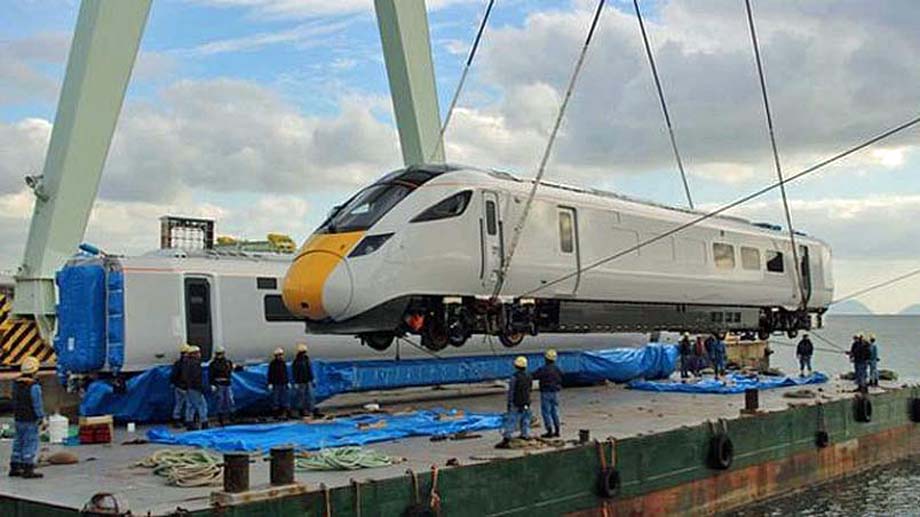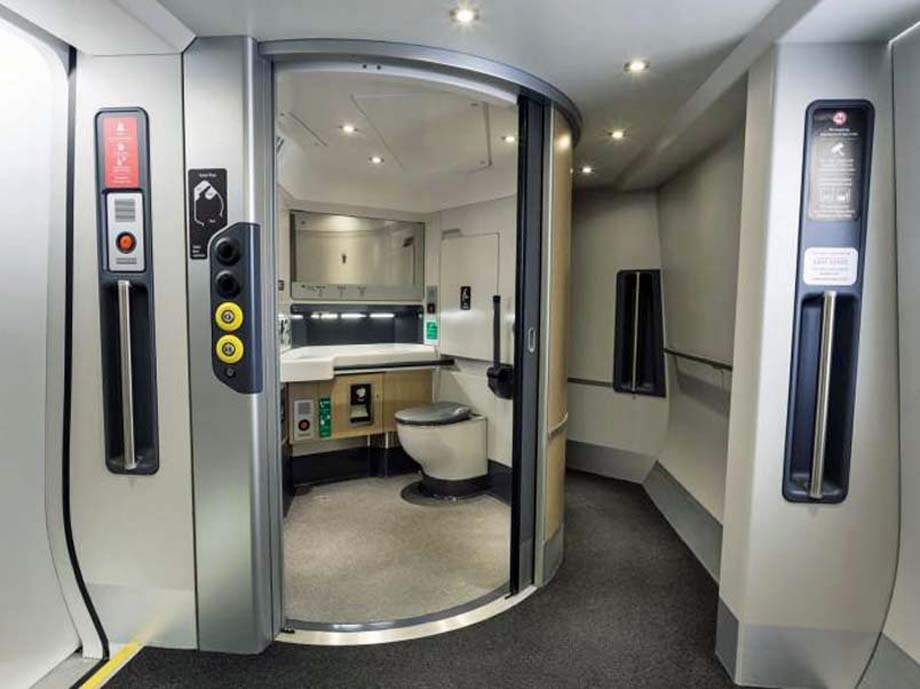A new Japanese train is arriving on British shores to replace the much loved InterCity 125.
Will people take it to their hearts in the way they did its veteran predecessor?
Pendolino probably, perhaps a Javelin, possibly even a Voyager.
Not many modern trains are household names in the manner of a Rocket or a Mallard.
The new train is arriving from Japan with big shoes to fill.
A test version of the Hitachi Class 800 Super Express has been unloaded at Southampton docks as a first step to replacing the familiar InterCity 125.
Over the next few years, 122 of these hi-tech trains will be assembled at a new plant in County Durham.
All will be electric and almost half will be able to switch between running on overhead wires or, where a line has not been electrified, as diesels.
The first trains will run on the Great Western main line from 2017 and the East Coast main line from 2018.
Rail writer Christian Wolmar says the new Hitachi will be the standard UK train over the coming decades.
"It is due to become the 747 of the railways."
Under the Intercity Express Programme (IEP), the Department for Transport (DfT) in 2011 awarded a £5.7 billion contract to Agility Trains, a consortium of Hitachi and infrastructure investor John Laing.
Wolmar is critical of the way the trains have been paid for.
"It was completely insane with a very complicated PFI deal that will cost the rail industry and push up ticket prices for years to come."
The DfT rejects this.
"The IEP represents great value for money for the taxpayer, and will deliver the services that passengers need and expect," a spokesman says.
Wolmar is a fan of the trains themselves.
"They'll be great to travel in. Modern trains are smoother and have more acceleration and Hitachi has a good reputation."
It is not high-speed in the European sense.
The new Hitachi will reach 125 mph, the same service speed as the British Rail war horse it is replacing.
(The maximum recorded speed for the 125 was 148 mph, a world record for a diesel).
The Hitachi train is capable of 140 mph but will only be able to reach this speed if Network Rail performs an upgrade on the track.
France's TGV and Spain's AVE travel at more than 190 mph.
But the DfT says it will cut journey times, increase the number of seats and services, and be more comfortable.
A nine-carriage Hitachi 800/801 will carry 627 people, 18 percent more than the InterCity 125.
During morning rush hour there will be 28 percent more seats going into King's Cross on the East Coast main line and 40 percent going into Paddington on the Great Western main line, the DfT says.
Average journey times will be cut by "up to 15 minutes" on routes from London to cities such as Cardiff, Swansea, Bristol, Leeds, Newcastle, and Edinburgh.
There will be better access for disabled travellers.
And it will have the biggest toilet of any train, according to Hitachi, with the doorway 87.5 centimetres wide.
The trains will be produced at the factory in Newton Aycliffe near Darlington next year, the first new train production facility in the UK for 150 years, says Hitachi Europe's chief executive Andy Barr.
It is expected to create 730 jobs in the North East.
Roger Ford, technology editor at Modern Railways, says its main selling point is the flexibility that the bi-mode trains will offer.
It means that a London to Inverness train could travel up to Edinburgh on the electric wires and continue on to Inverness using diesel.
At the moment a diesel would have to be used for the entire 580 mile journey.
It seems unlikely the new train is suitable for High Speed 2 (HS2).
Its top speed of 140 mph is a long way short of the 225 mph needed.
The DfT says that the IEP was procured for the East Coast and Great Western lines rather than to run on high-speed lines.
But Hitachi's Barr says, "Given that we don't yet have the technical specification for the HS2 trains, we would anticipate that a derivative of the Class 800 could run on the lines."
In the next few months the early prototype will be tested on the rail network.
Passengers might mistake it for the sleek-nosed Javelin, another Hitachi train that runs on High Speed 1 between Kent and London St Pancras, and ran a shuttle service to the Olympic Park during London 2012.
The carriages of the new train will be longer than the Javelin as it runs on longer straighter routes, Hitachi says.
The Pendolino is used on the West Coat main line, which has lots of curves, and the trains have to tilt.
With no such tilting technology on a Hitachi 800/801 there is more room inside the carriages, says Barr.
The Class 800 and 801 will be as iconic as the InterCity 125, Barr says.
And a lot more modern.
The InterCity 125 had a diesel locomotive at each end of the train, whereas all the kit needed to power the new Hitachi is under the floor, there is no need for a locomotive, he says.
Is this the end of the InterCity 125?
Virgin East Coast says the Hitachi will replace its 14 125s, as well as some older electric trains.
First Great Western has 53 of the 125s, the most of any train company.
It is replacing them with the new train on its Paddington-South Wales and Paddington-North Cotswolds services.
But the 125s will stay on the Paddington-Cornwall service.
The almost venerable 125 will continue on other lines such as the East Midlands service and between Scottish cities.
The Hitachi 800/801 will soon be a familiar sight on the railways.
"Whether we view it with the same affection as the 125 remains to be seen," Wolmar says.
Ford thinks they are incomparable.
The Hitachi is a "modern electric train" whereas the 125 was "something really special", a symbol of British design excellence.
"When it came in 1976 it was the second fastest in the world after Japan's bullet train. It was something to be proud of."
Tom de Castella.
(likely no image with original article)
(usually because it's been seen before)
(the image is altered or fake)
provisions in Section 29 of the
Canadian Copyright Modernization Act.





